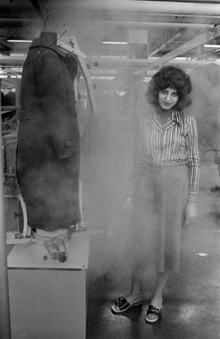Migrant workers > The photographers’ role
Around 1965, Herbert Behrens took photographs of the level of social assistance given to migrants. These pictures contrast sharply with the later photographs of squalid living conditions, riots and demonstrations. Robert de Hartogh, Bertien van Manen and Maria Toby were primarily interested in the way the newcomers were housed. In the years 1976-1980, Maria Toby photographed Turks, Moroccans, Surinamese and Chinese people in her own Rotterdam neighborhood of Oude Noorden. The many photographs of street scenes and children at play are characteristic of her work.
Media
A Seventh Man (Harmondsworth, 1975) is the first recorded illustrated book on foreign laborers in Northwestern Europe: the photographs were taken by Jean Mohr, with John Berger writing the accompanying text. Robert de Hartogh's Kijkboek over gastarbeid (Picture book on foreign labor, no place-name, 1977), and Bertien van Manen's Vrouwen te gast (Women guest workers), Amsterdam, 1979, were later published in the Netherlands . Both works are significant examples of the efforts the media made to circulate information on migrant workers. Besides photographs taken by Robert de Hartogh himself, Kijkboek over gastarbeid also includes images by other photographers, such as Lex de Herder, Bertien van Manen, Peter Martens and Koen Wessing. The accompanying text in particular is evidence of the motivation to generate understanding about people who were called ‘guest workers' at the time, for ‘hatred is born of ignorance'.
Interest groups
Starting in 1975 and for more than three decades, Robert de Hartogh took photographs of how migrants lived in Rotterdam. Commissioned by interest groups, he monitored mostly Hindustanis, Moroccans and Turks at work, at home, in school, in the mosque and while celebrating. His photographs appeared in these groups' countless publications and were exhibited by the Rotterdam Ethnographic Museum (now renamed World Museum). At the time, periodicals also devoted photo spreads to these themes on a regular basis. Many of De Hartogh's photographs appeared in one of them, the Dutch weekly Nieuwe Revu, under headings like Onze nieuwe buren (Our new neighbors, 1978) and De ongenode gasten van de bisschop (The bishop's unwanted guests, 1979). Thanks to such publications, the wider public learned about the problems political refugees and migrant workers had to face.

